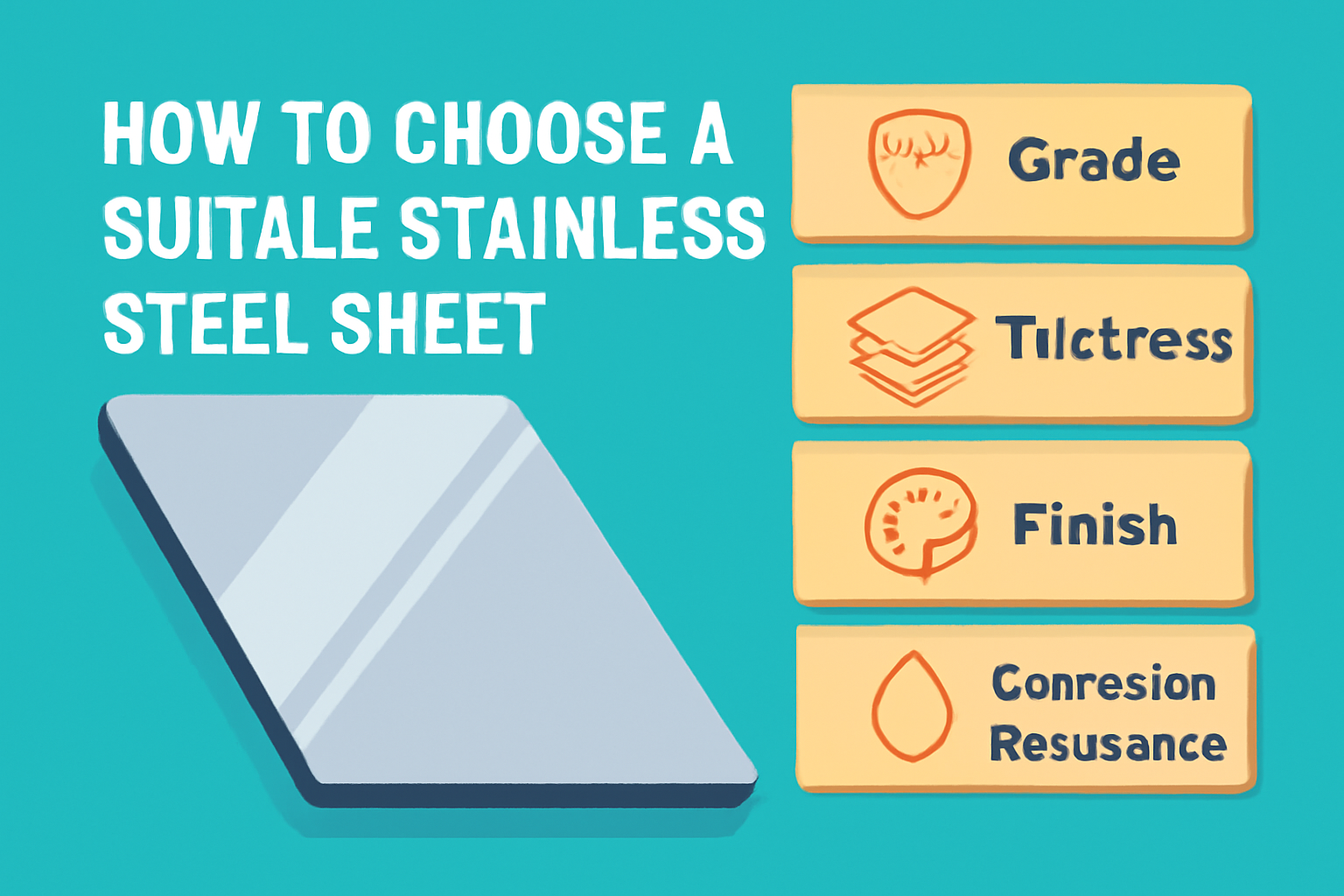How to Choose A Suitable Stainless Steel Sheet?

They make stainless steel sheets that are used in different sectors such as construction, the automotive industry, kitchenware, and medical equipment. They are very strong and resistant to corrosion, and they look refined, which makes them the best option when manufacturers and builders make a choice. However, the various options relating to stainless steel sheets are confusing to select the correct type.
What is a stainless steel sheet?
The stainless steel sheet is a broadly rolled metal product manufactured as an alloy of iron, chromium, and sometimes nickel. It has a reputation for not rusting, being able to handle heat, and not getting corroded by chemicals. Suitable stainless steel sheets are available in various grades, finishes, and thicknesses.
You might require a sheet with strength, polish, or resistance to corrosion depending upon your use cases. The trick is that the properties of the material must fit the requirements of the job.
The Major Actions to Take into Account
1. Stainless Steel Grade
The initial process in stainless steel sheet selection is the selection of grade. Various grades have various functions:
- 304 Stainless Steel: The most common type, a great corrosion resistance, and it is used in kitchens and furniture.
- 316 Stainless Steel: Has molybdenum, perfect for marine and chemical uses.
- 430 Stainless Steel: Cost is cheaper, and it is deployed in indoor environments or where the risk of corrosion is not a major concern.
- 201 Stainless Steel: The lower-priced, lower corrosion-resistant stainless steel relative to 304 and used in less strenuous applications.
Selection of the appropriate grade guarantees longevity and performance in the project.
2. Sheet Thickness
Thickness is gauged or measured in millimeters. Heavier sheets are stronger and difficult to work with. Common thicknesses are between 0.4 mm and 6mm.
General tip:
- Thin sheets (0.41- 1 mm): Suitable mainly for decoration panels, signs.
- Medium (1-3 mm) sheets: Can be used in kitchen cabinets and kitchencountersr.
- Thick sheets (3- 6 mm): Applied in heavy machines and parts of the industry.
3. Finish and Look
Stainless steel sheets are available with various surface finishes according to your requirements of aesthetics or functionality:
- 2B Finish: Matte finish, all-purpose
- BA finish: Bright annealed and smooth, and shiny
- No.4 Finish: Brushed appearance applied to the elevators and the kitchen items
- Mirror Finish: Shiny, good to have on decorative objects
Choose a finish that matches the rest of your application where presentation is an issue.
4. Corrosion Resistance
Stainless steel does not show equal corrosion resistance. In the case of a near-sea environment, within chemical plants, or food or water, the 316 stainless steel is preferable.
When dealing with a sheet intended to be used outdoors, make sure you always select a grade that has a high rust level.
Common Uses of Stainless Steel Sheets
- Sinks and countertops in the kitchen
- Wall panels and ornamental trims
- Automotive parts
- Pipes and chemical tanks
- Building facades
- Medical equipment
- Stainless steel CNC Machining as part of the machinery components
Depending on the application, a sheet grade or thickness might vary; you will likely need to purchase sheets before you know your particular project specification.
Questions to Ask Before Buying
- How is the stainless steel sheet meant to be used?
- Will the sheet come into contact with moisture, chemicals, or heat?
- And what finish is necessary, polished, brushed, or matte?
- How much is the budget and the size of the project?
- Should the sheet be cut, welded, or bent?
These questions will assist you in selecting the appropriate stainless steel sheet to use in your targeted project.
Shearing, Forming of Stainless Steel Sheets
Stainless steel is also hard, hence hard to cut and shape by ordinary people. Most industries take advantage of Stainless Steel CNC Machining to acquire precision cuts and irregular shapes. CNC machining guarantees clean edges and dimensions in the sheet without breaking it down.
In cases of special designs and holes, slots needed, CNC machining works well when dealing with stainless steel jobs.
Selection of Supplier
In choosing the supplier, look out for:
- Vast grades and thicknesses
- Certifications of quality (ISO, ASTM)
- Special Goals Personalization
- Transparent contracts and schedules of delivery
- Quality service to customers
Other suppliers provide a complete machining experience too, in case you require your job to be in some detail.
Conclusion
Various factors such as grade, thickness, finish, intended use, and many more determine the type of stainless steel sheet to be used. If you are designing a kitchen counter, fabricating a machine part, or constructing a structure, your choice will make a difference that will last a long time and save money.
When it comes to custom fabrication services, it can be beneficial in terms of savings of time and getting a precise outcome,aske in the case of Stainless Steel CNC Machining. To get the right material to do your job is always necessary to discuss with your supplier and explain to him/her what you want to be done.



